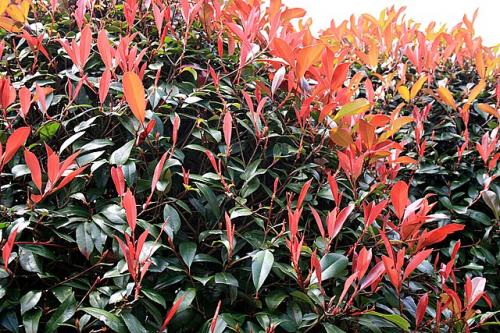|
Recent Entries to this Blog
Photinia Red Robin characteristics and most important care
Posted: 29 May 2023 Posted: 03 May 2023 Posted: 22 Apr 2023 Posted: 11 Apr 2023 Posted: 01 Apr 2023 All Entries |
Photinia Red Robin characteristics and most important careOne of the shrubs that can give your garden the most color without a doubt is the Photinia Red Robin. It is very easy to care for and will create one of the most beautiful red patterns around. In this article we will analyze various aspects of this particular shrub, stay until the end and you will surely want to have one in your garden. 
Photinia red robin ( photo / image / picture from AlbertoL's Garden ) Although this ornamental shrub originates from the United Kingdom, its cultivation has now spread to gardens around the world. One place where it is very popular is in New Zealand, especially in Auckland gardens. Photinia Red Robin Auckland has become a beloved feature in city landscapes. Its distinctive beauty adds a touch of elegance to residential gardens, parks, and public spaces. 1. What is the Photinia Red Robin? The Photinia red robin is a shrub that is characterized by having leaves that, instead of being completely green, are maroon tones. In fact, only when the leaves are ripe are they green, meanwhile, that is, while they are growing, they are red and attract a lot of attention. It has a slow growth, and training pruning is important for it to take shape. It does not have a considerable height (no more than 1.5 meters), so it is used as a shrub for gardens and parks or to create small fences with them. Of course, it can also be kept in a pot and many are encouraged to create fun shapes with this plant. As for the stem, if you look at some images of this shrub you will see that it is red, and as it matures it also changes color as in the case of the leaves. In the spring season it blooms with small white flowers with a yellow center. Normally from May, the flowers will give way to the fruits, which will ripen in summer and will be blue. It is not edible for humans, although you may see birds feeding on it. 2. The nine virtues of the Photinia Red Robin There are many good reasons why you won't regret having a Red Robin photinia or a whole hedge formed with them: 1. It roots easily, especially if you apply a slow release fertilizer rich in phosphorus, at the bottom of the hole where you are going to plant it. 2. It grows very fast, up to 1 m per year, or more if conditions are favourable. 3. It tolerates pruning very well with a great regrowth capacity, even favoring it by making its color more vivid. 4. Due to its large evergreen leaves, it is well suited for making screen hedges for privacy. In addition, with pruning its density increases to make it more bushy. 5. It is very ornamental due to the color of its large, shiny leaves, so it also looks great as an isolated shrub. 6. It can be grown in a pot or in a container, better if you choose a dwarf variety. 7. It is tolerant of any type of soil, although it vegetates worse on limestone. It can thrive in poor soil, but it will flourish much more if it is fertile or if you fertilize it regularly. 8. It is a very rustic plant, supporting strong frosts down to -15 ºC. 9. It suffers few pests and diseases, although some can affect it. 3. Photinia Red Robin care to avoid problems If you are already determined to cultivate your Photinia Red Robin, I give you a list of tips so that you always look your best. - Climate: Prefers temperate climates without very high temperatures. Withstands frosts up to -15 ºC. - Soil: It thrives in all types of soils that are not very limestone, but better in loose and fertile soils. - Exposure: If you live in an area with very hot summers, plant it best in partial shade. If not, in full sun so that its colors are more intense. - Irrigation: It is enough to water it moderately 2 to 3 times a week in the hot season. The rest of the year - only occasionally so that the soil does not dry out completely. - Fertilizer: It will appreciate if you provide some mineral organic fertilizer, better once a month. - Pests: It is little affected by pests but it can be attacked by the false caterpillar of the rose bush, which causes holes in its leaves. - Pruning: it needs maintenance pruning throughout the year, and more drastic pruning in winter. Keep in mind that these are general care, they may undergo some changes due to aspects such as their geographical location or special characteristics of the plant. Therefore, use our recommendations as a general guide, then your experience or the advice of experts in the area can help you carry out more specific care. This blog entry has been viewed 1890 times
You're reading one of many blogs on GardenStew.com.
Register for free and start your own blog today.
I use photinia as a hedge until they grow into trees.
Login or register to leave a comment. |
|

